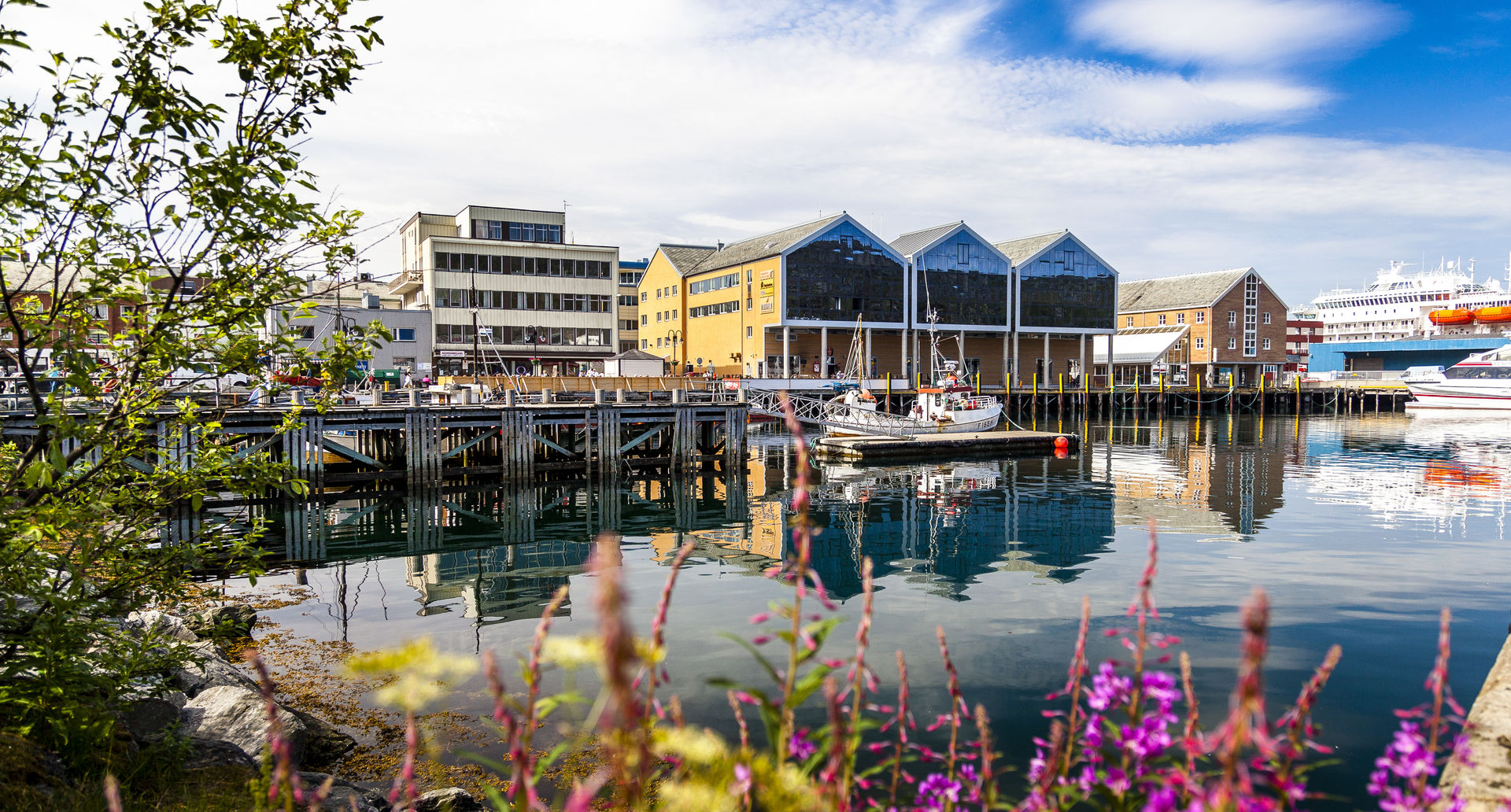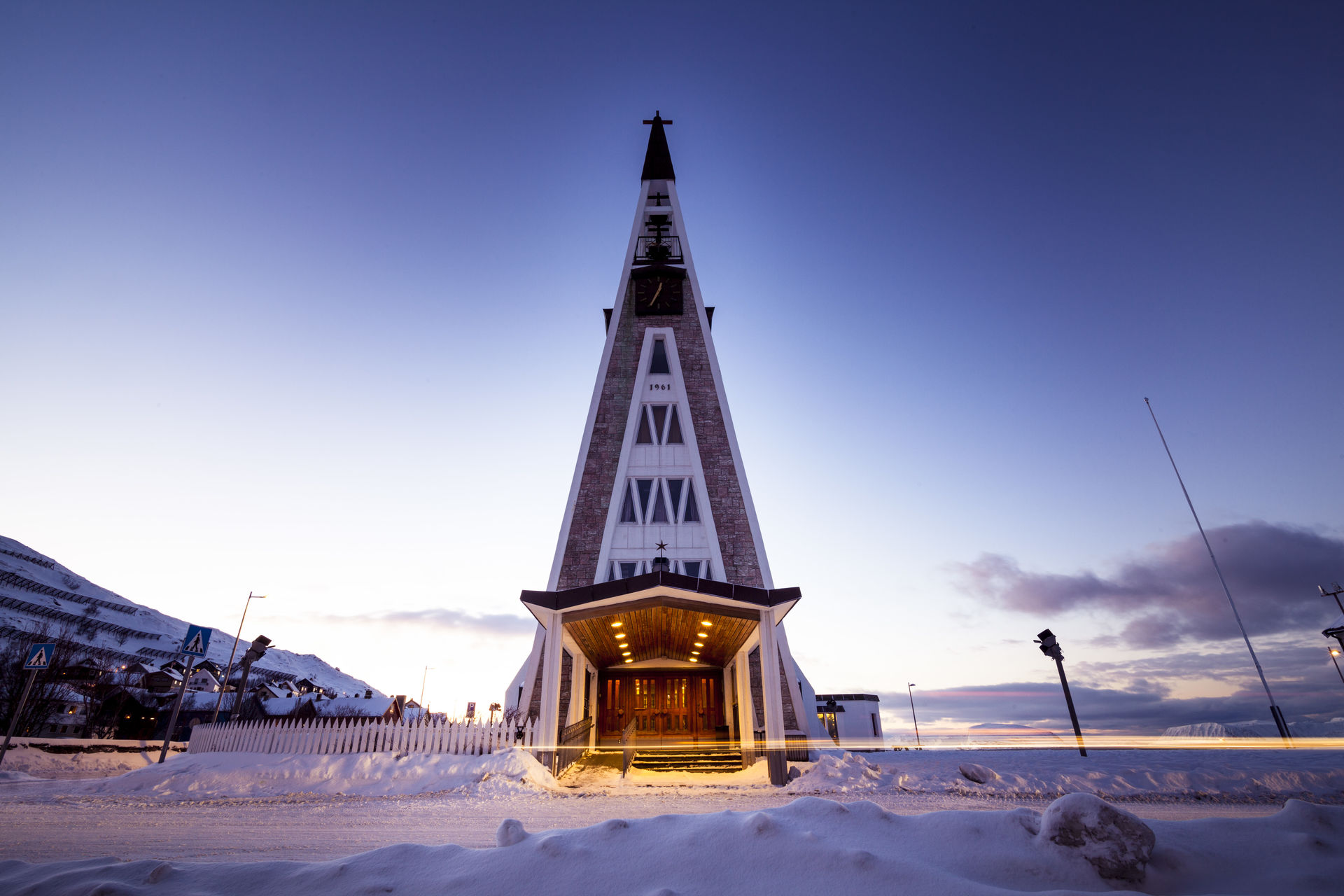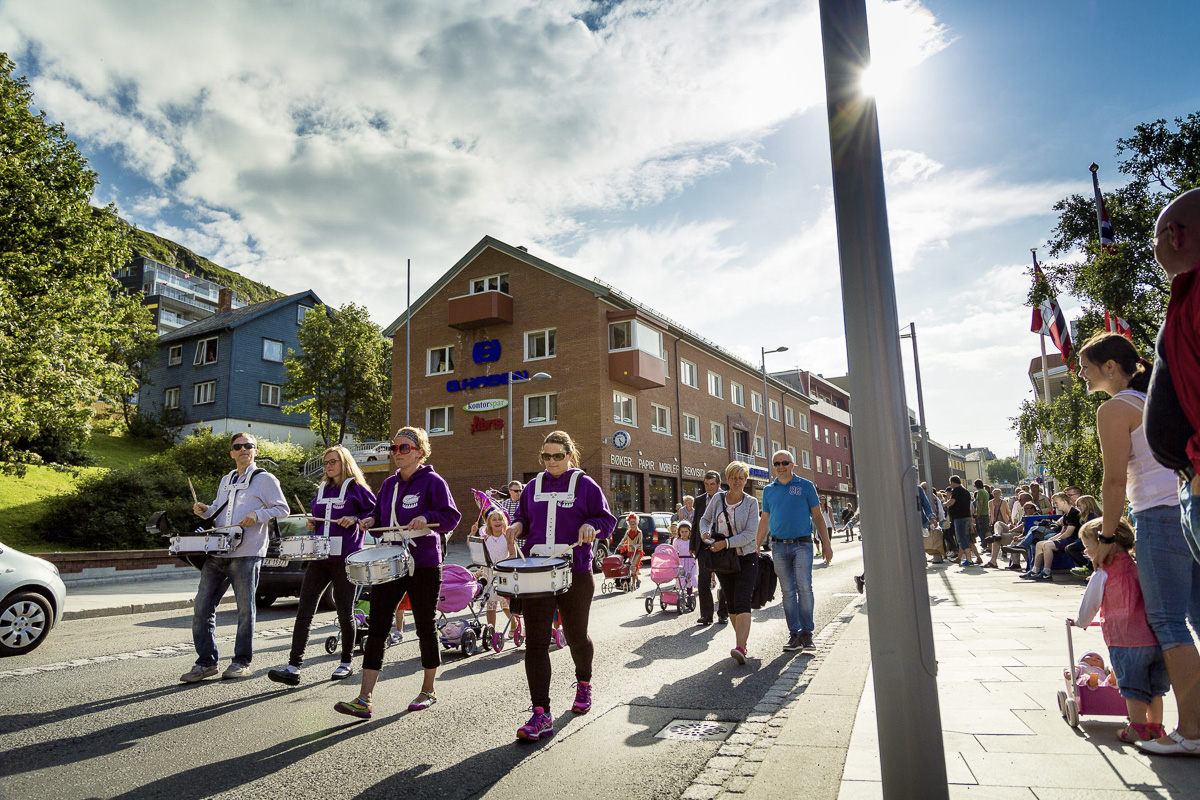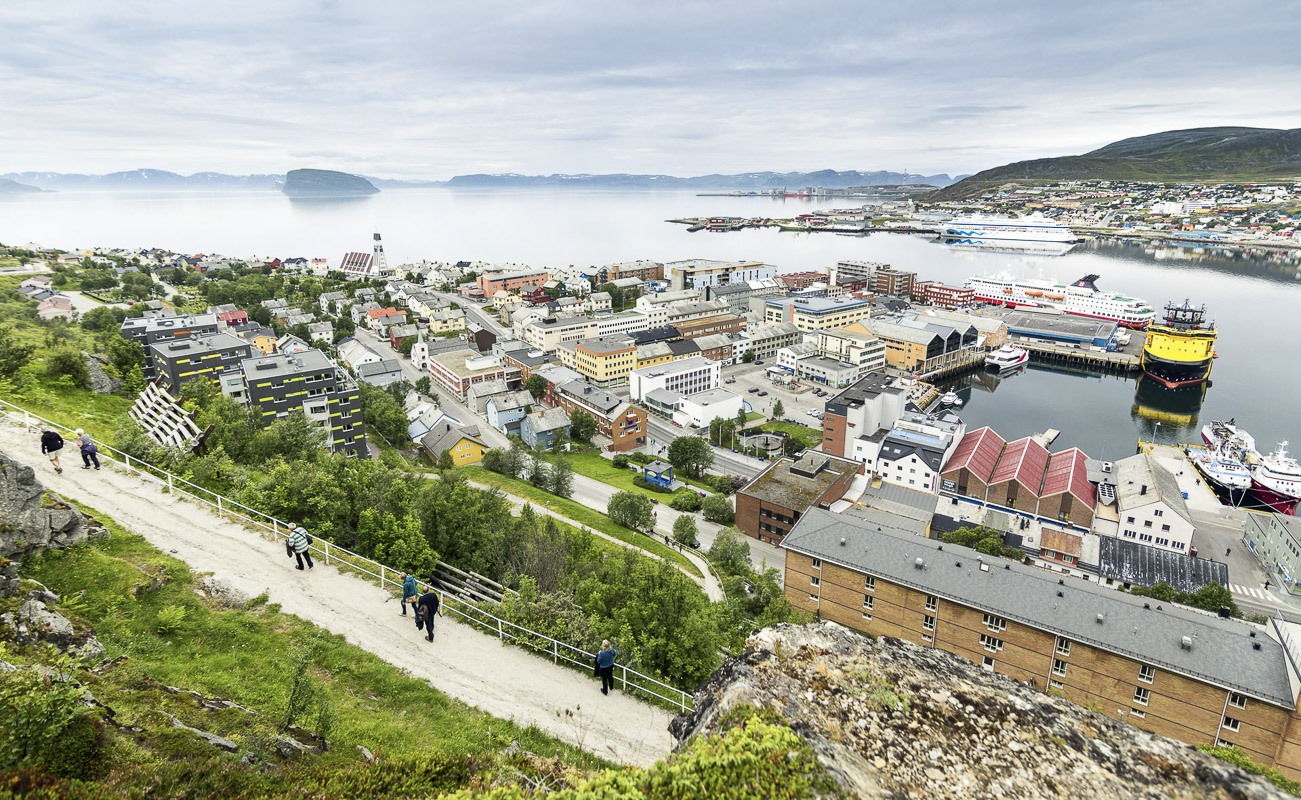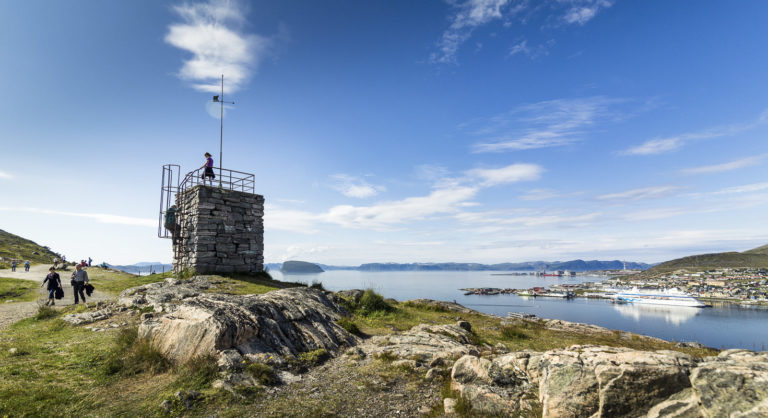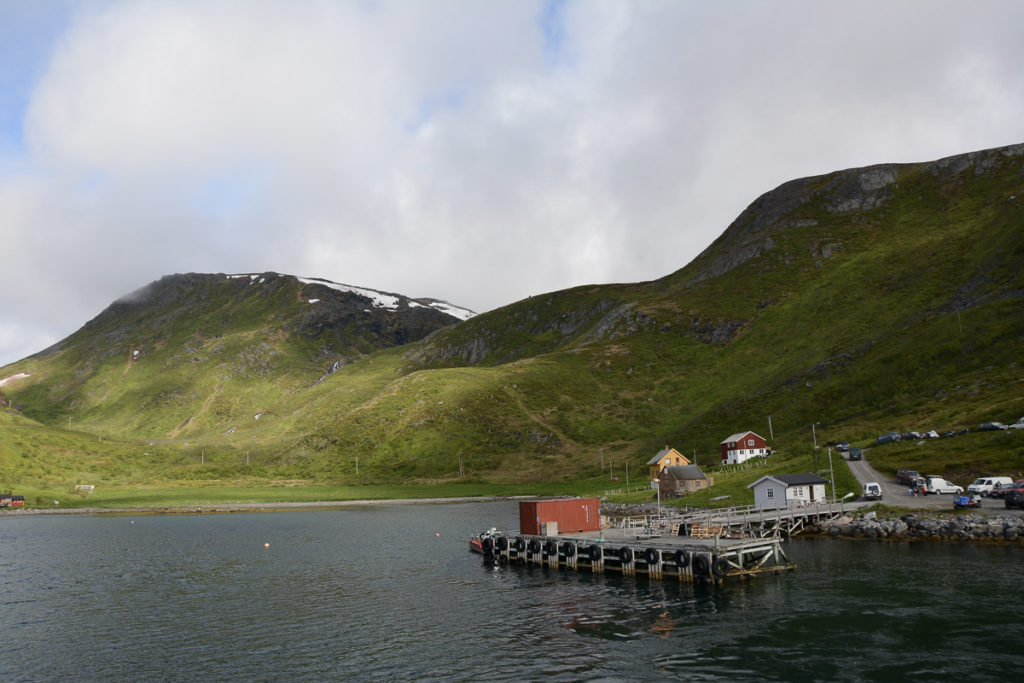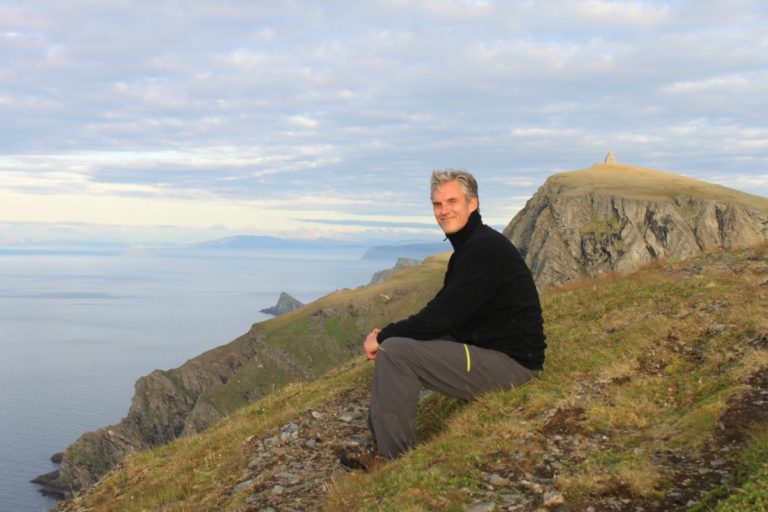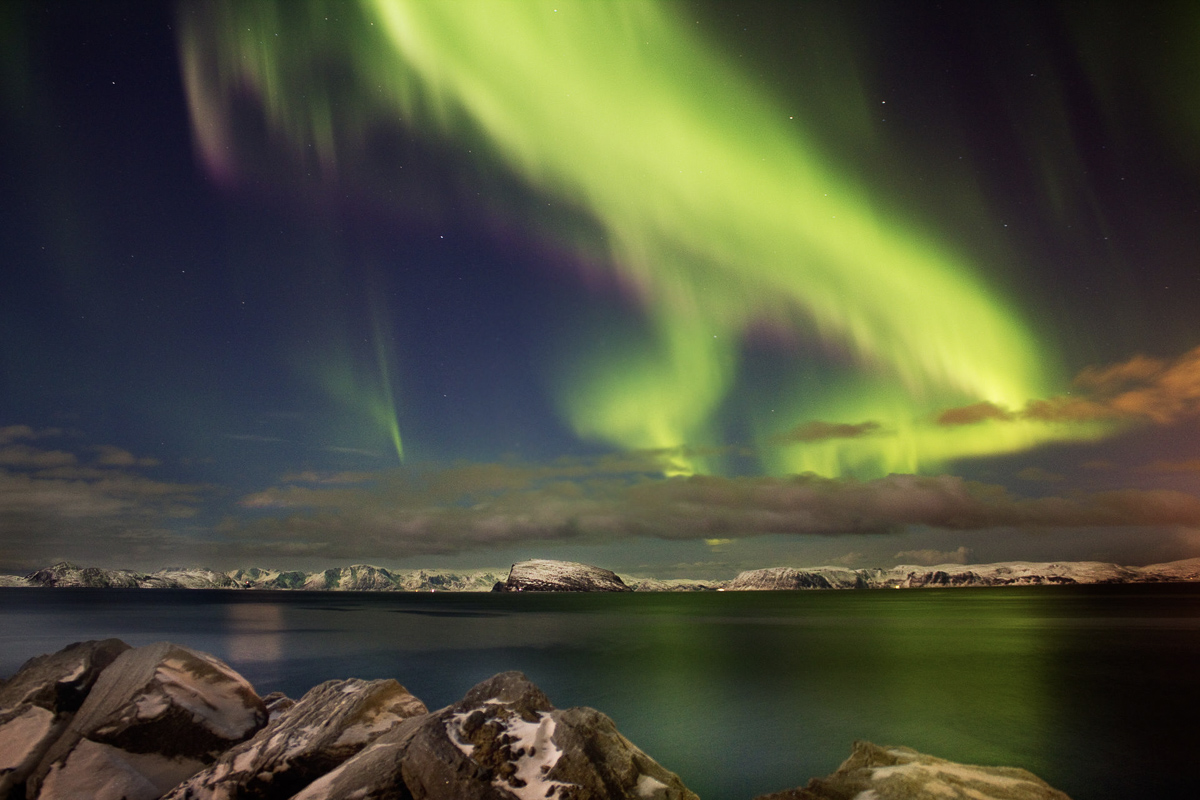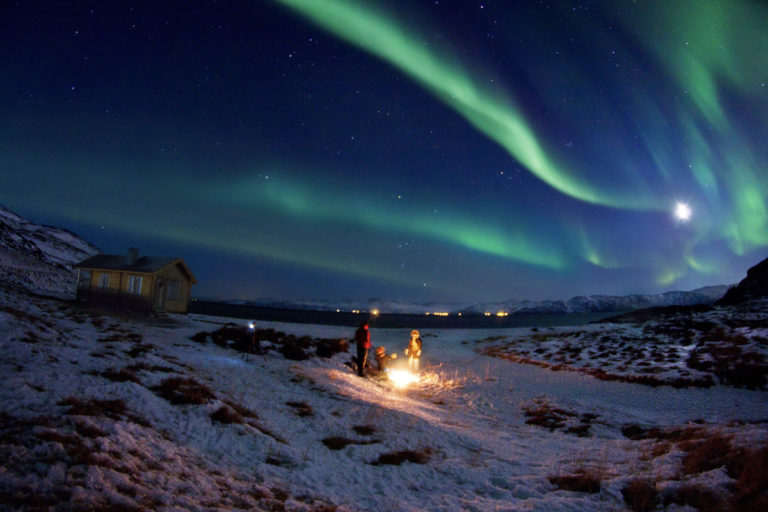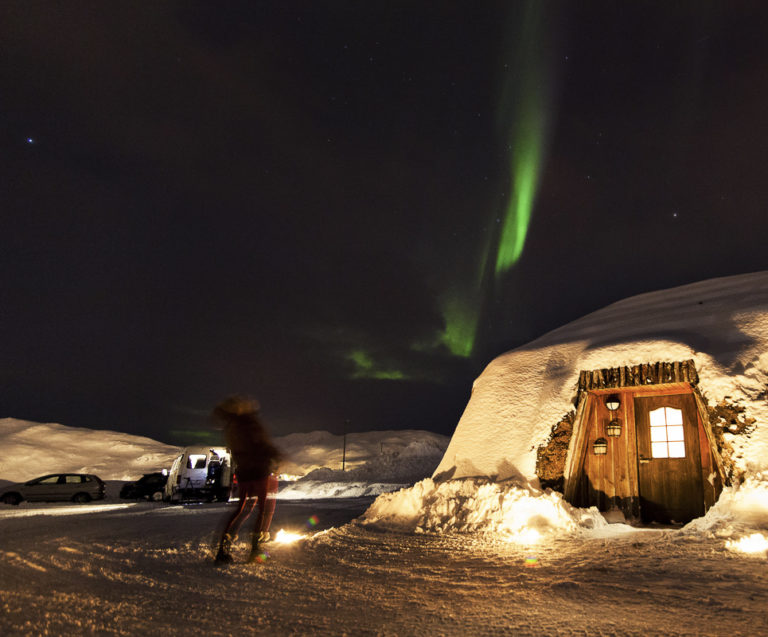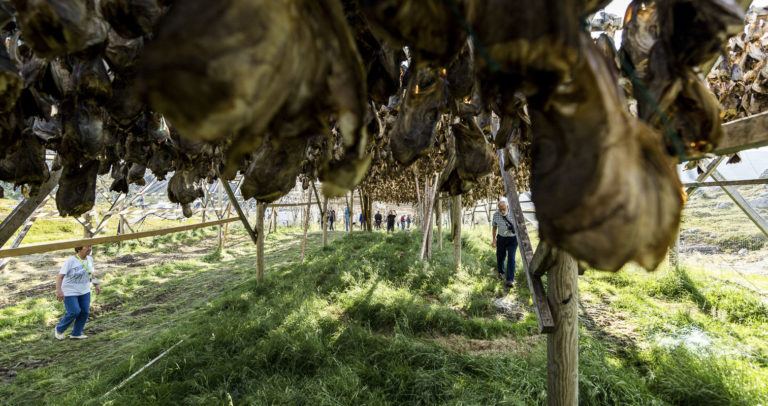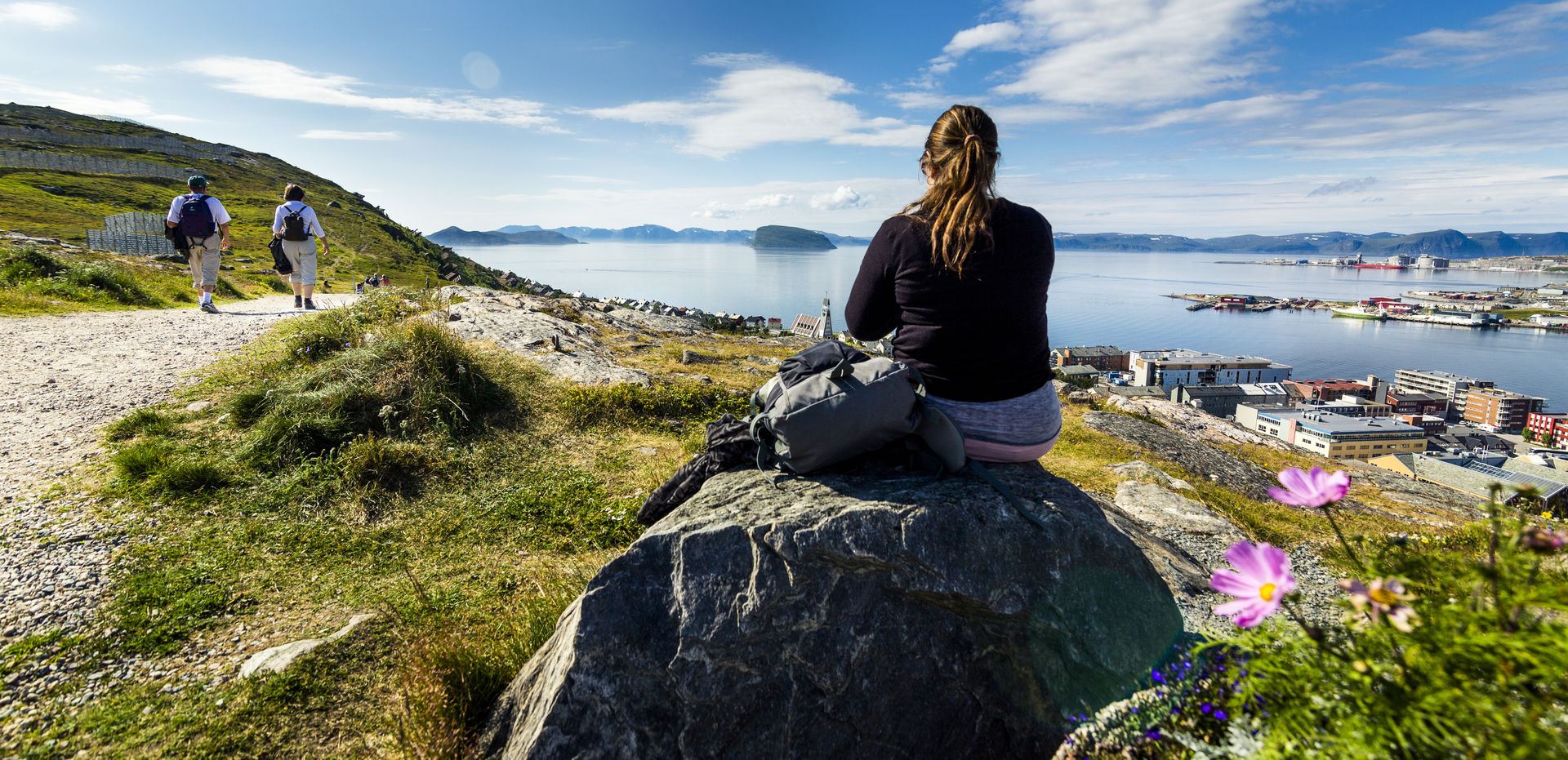The world’s northernmost city, Hammerfest, is found in stark, barren, Arctic landscapes. Yet is is a real city with all the city trimmings.
The world’s northernmost city enjoys a fabulous situation on a curved bay, surrounded by stark, barren Arctic moorland, mountains and waterways. Its history as a centre for Arctic hunting and fishing goes back to 1789, and today Hammerfest is a modern centre of gas exports, fishing and tourism.
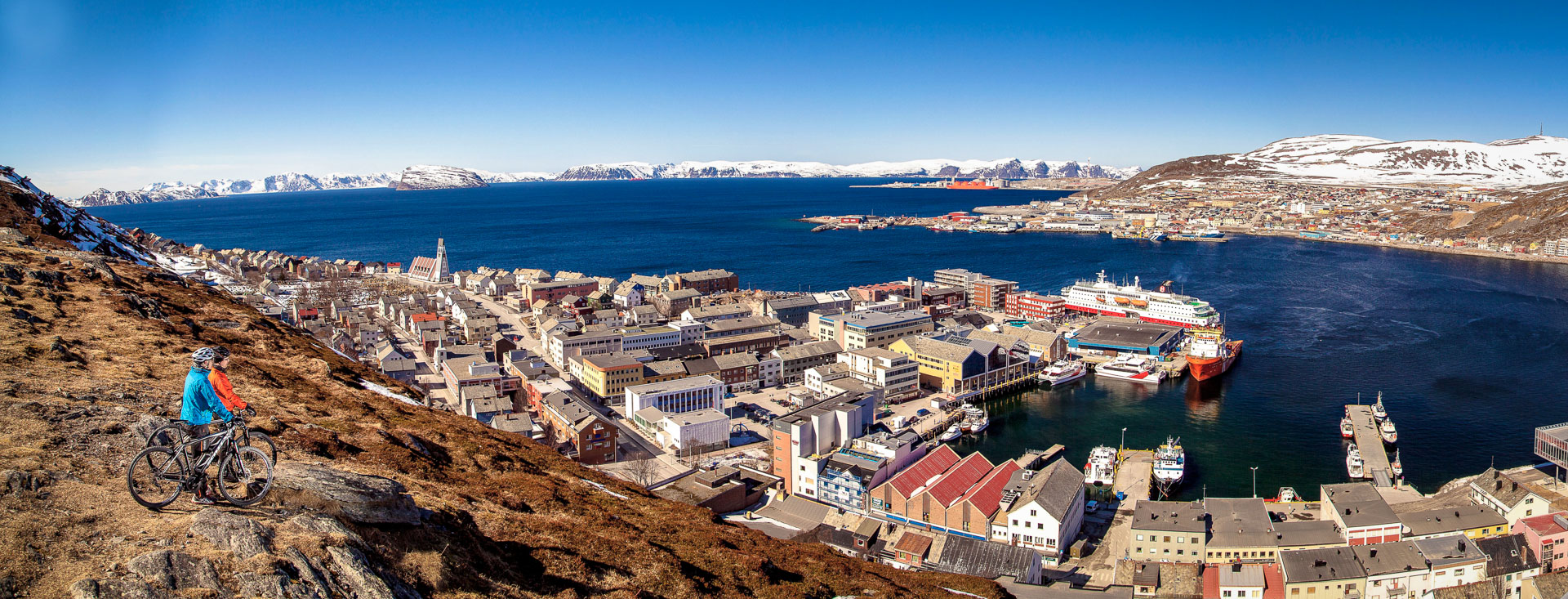
Hammerfest is the oldest city in the north
Hammerfest was issued the city charter in 1789. The king of Denmark-Norway, who was clinically mad, had a clear moment, which the court used to obtain his signature on the city charter. Thus a tiny settlement in the far north could start its development. Early development was slow, and in 1809, the city was burned by the British as part of the Napoleonic wars. However, the seas are rich off Hammerfest, and fish export made the city grow in the 19th c.
Hammerfest was a spec of urban city culture
Early visitors to Hammerfest were not impressed by the size of the city. However, the gentry of Hammerfest was well versed in foreign languages and in education and knowledge of the outside world. Thus, Hammerfest became an outpost of European urban culture and a surprise to the visitors.
The Polar Bear Society celebrate that Hammerfest is the world’s northernmost city
In Norway, the term “city” was traditionally issued by the king. Hammerfest is the northernmost of all the traditional cities in Norway, and there is no urban settlement further north that is bigger than Hammerfest’s 10 000 inhabitants. However, urban settlements in Siberia, Alaska, Greenland and Norway are found further north, but they all lack the history and flair of Hammerfest. Since the term “city” is also ambiguous in both English and other languages, Hammerfest’s status is thus debatable.
Arctic Hunting and discoveries
Already in 1794, the Hammerfestonians sent out their first hunting expedition to the Arctic. They went to the Bear Island, where they hunted walrus. Soon the brave hunters of Hammerfest were hunting in a vast area from Greenland in the west to Western Siberia in the east. Hunters from Hammerfest were sought-after crew members on Arctic Expeditions, best know is Adolf Lindstrøm, who participated in Roald Amundsen’s South Pole Expedtion, serving his now famous “steak à la Lindstrøm”. The Royal and Ancient Polar Bear Society presents all this in their collections, and you can even participate in a “mini expedition” on the Salen Mountain.
Celebrate that you have been all the way to Hammerfest
The Royal and Ancient Polar Bear Club is the exclusive club for those who have made the achievement of reaching Hammerfest. If you wear the needle on your jacket, fellow Hammerfest visitors will be in the know. The membership is handed out in the city hall, and the diploma is signed by the mayor.
The first electric streetlamps were lit in Hammerfest
Hammerfest suffered a devastating fire in 1890, destroying half the city. With the help of donations, the city was quickly getting back on its feet. The gentry built new wooden houses with little onion-shaped domes, a nod to their trade connections with Arkhangelsk in Russia. One of the improvements done was the establishment of a hydro electric power station, using a 40 metre waterfall just outside town. In 1891, the city was lit by 18 street lamps and 300 light bulbs in private houses. Imagine how the Polar Night got brighter!
Total destruction came in 1944
In the autumn of 1944, Hammerfest fell victim to the scorched earth tactics of the German occupying forces. The Germans wanted to establish a new frontline further southwest against the advancing Red Army. The citizens were forcibly evacuated to Tromsø, and from there sent onwards to live with families further south. Every single building except the grave chapel, every electricity or telephone pole, the docks and all other human installations were razed to the ground. When the snow fell over Hammerfest, the only sign of a city were a few house chimneys.
Hammerfest rose from the ashes
In 1945, a few of the inhabitants returned. They lived under capsized boats and in makeshift huts, and soon baracks were built as more people returned. However, in the late 40’ies and 50’ies, Hammerfest rose from the ashes a modern city. Findus established a giant fish processing plant and modern houses in the colourful reconstruction style were built along the curved bay. The city hall and the striking modern church added to the modernist look. The Museum of Reconstruction tells the story of how Hammerfest and the entire area razed to the ground in late 1944 was reconstructed. This museum is not afraid to present new and surprising aspects to this uprooting experience, and is a key to understanding Norway’s furthest north.
The oil age creates another boom
As fishing got more and more industrialised, fish stocks were depleted. Quotas had to be introduced, and fish processing needed less and less people. This mean that Hammerfest slowly went into stagnation, and the population numbers started to shrink. However, the opening of off-shore gas fields northwest of Hammerfest meant another boom for the city. Building started in 2002, and by 2007, gas was pipelined in to the Melkøya gas processing plant just outside the city. The wealth created is visible in apartment buildings, hotels, heated pavements and the new culture house replacing the big, old fish plant. Hammerfest’s history of booms and decline seem to go on.
Bygderuta takes you to remote settlements
From the city of Hammerfest, a boat route takes you to all the minuscule settlements that cannot be reached by car. You get to see stark, naked, steep coastlines, you may be lucky to see jumping dolphins and you see local life on board. Akkarfjord is the biggest settlement, where you can also eat and stay the night. This is also the starting point of hiking routes.
The inland is greener
The Hammerfest island of Kvaløya is connected with the mainland with the Kvalsundbrua suspension bridge. Kvalsund is a community with deep Sami roots, and at Kokelv you can stop at the small Sami museum. The small-grown birch trees give another feel than the barren coast, before giving way to the enormous high plateau of Finnmarksvidda up around Skaidi.
The landscape is perfect for hiking
One of the most striking things with Hammerfest is the location: The city is dense and colourful, and the area around is almost totally empty. Trees are only found in gardens, and in sheltered valleys along the Storvannet lake. The rest are treeless arctic moors. You walk on solid turf or on stony ground, the mountains are of moderate hikes and you don’t get lost. From the city, you can walk up the zig-zag path to Mount Salen, which takes you just a few minutes. From there you have a wonderful view of Hammerfest and its curved bay. The helm-shaped island of Håja is clearly visible, as are the remote mountains on Sørøya Island. More challenging is Mount Tyven, 418 metres of altitude.
Go hiking on the other islands
Avid hikers should explore the other islands. Take the Bygderuta across to Sørøya Island and do the 20 km long return hike to the Kjøttvikvarden beacon. From here, you see the barren, outer coast and the endless horizon of the Atlantic. The island of Seiland has varied hiking in the parts closest to Hammerfest, but more challenging wilderness with glaciers and peaks further south.
For two and a half months, the Midnight Sun shines in Hammerfest
From the 14to of May to the 29th of July, Hammerfest basks in the rays of the Midnight Sun. From Salen mountain, you see the sun bathe the landscape in a golden hue. Many people also hire e-bikes from the Tourist Board, and go to the nearby village of Forsøl. From here, you see the sun over the open sea.
Hammerfest is under the Northern Lights oval
Hammerfest is found directly under the Northern Lights oval. This means you have very good chances of spotting the lights here. Travellers can go for a long walk, possibly up to Mount Salen from where you can see the lights over the city. If you are good at night photography, you can also photograph the rays of the Northern Lights over the city. Beginner photographers, however, should seek out a location a bit out of town. One suggestion is Kirkegårdsbukt near the village of Forsøl. You can also drive to Kvalsand and Skaidi on the highway to Hammerfest, where you find many dark spots.
The Meridian Column is on the UNESCO heritage list
Imagine a time when we didn’t know the exact size and shape of the globe. The German von Struve, a professor at the Russian (now Estonian) university of Tartu (Dorpat) wanted find it out, so in the years 1816 to 1855, he measured the size of the globe with the help of 265 triangulation points in ten countries, all along the same longitude. The northermost of them all was in Hammerfest. Today, the Meridian Column is the most visible of all the 34 remaining triangulation points that together form a UNESCO world heritage site. You can see it at Point Fugleneset, a residential area a bit outside the centre.

When should I go to Hammerfest?
Hammerfest can be visited the whole year. Visitors come here in winter for the Northern Lights and to experience the winter landscapes. April and May are perfect for snowmobiling, ice fishing and skiing in the nearby Skaidi/Repparfjorddalen area. The snow lingers until June here. June and July are when Hammerfest enjoys the brief Midnight Sun summer. At this time, hiking is perfect in the nearby mountains. August and September is a favourite hiking time for locals, and this is also berry picking time. The first Northern lights turn up in late August, and by mid-September, it is prime aurora viewing time. In October and November, snow comes and goes, days get shorter and the Northern Lights get more time to play every night. This is also a time to enjoy culture and togetherness in the bars and the grand new culture house.
Useful to know about Hammerfest
To arrive in style, you should of course sail with Hurtigruten that calls at Hammerfest every day. Much more rapid is the propeller plane from Tromsø, with several flights a day. Travellers that want to see more than just Hammerfest, land in Alta. This airport is big enough for 737’s, and you can get discount tickets easily. From Alta you can either go by catamaran boat of by bus to Hammerfest.
Hammerfest has several good hotels, and a few budget options in town. There is also a campsite. Out of town, there are simpler hostels, guesthouses and self catering holiday homes in all the small villages. At Skaidi, where the Hammerfest road forks off from the E6, there is also a hotel.
When should I go to Hammerfest?
The North Cape, or Nordkapp, is north east of Hammerfest. The Hurtigruten sails early in the morning from Hammerfest to Honningsvåg, arriving at mid day. It is also a short hop by plane, or you can take the bus around.
Hammerfest municipality has some 10 000 inhabitants, nearly all living in Hammerfest or the nearby village of Rypefjord.
Hammerfest became a city by royal charter in 1789. These days, Norway does not issue city charters anymore, and there is no legal difference between a city and towns, villages etc. This means that settlements further north can unilaterally declare themselves a city. This is the case with arch rival Honningsvåg, that has decided do call itself a city. The status “city” is thus debatable.

Visit Hammerfest
Your guide to Hammerfest is Visit Hammerfest, for short Hammerfest Turist.
